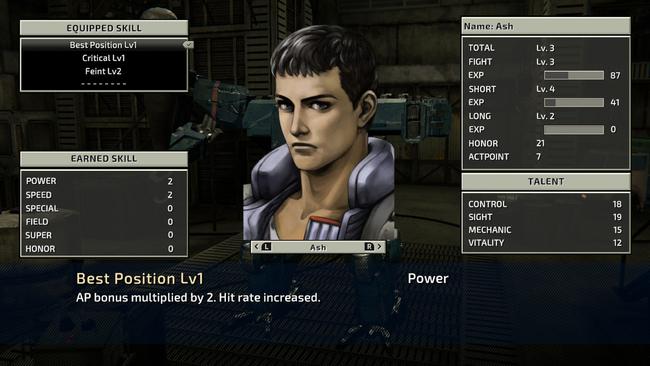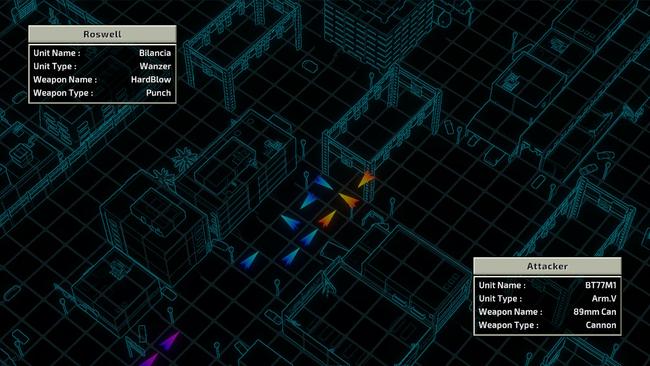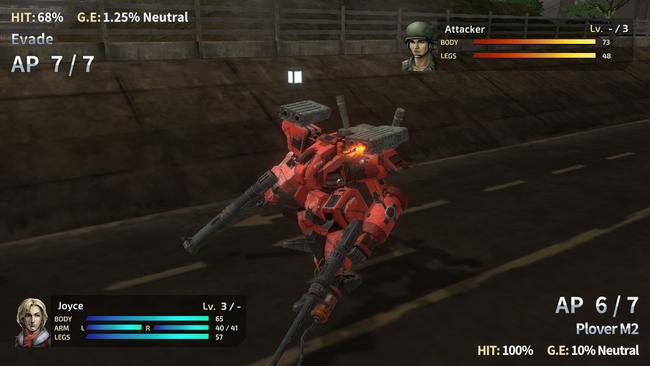
Front Mission 2: Remake Review
Even as I played last year’s Front Mission 1st: Remake, I couldn’t help but dream of what was still to come. It’s a remake that modernizes a simpler game and a more straightforward experience, with somewhat shakier storytelling and less refined core mechanics than its sequels. I gave it a 7 at the time, and felt good about Forever Entertainment’s continuing coverage of one of Square Enix’s lost treasures.
Something clearly went wrong here. Despite every addition to the Front Mission formula that has always made the second game a stronger experience, the remake developers have failed to deliver on something profoundly important for a game of this complexity: the localization. Wounded by so many confounding sentences, from character dialogue to rudimentary tutorials and everything in-between, Front Mission 2: Remake is kneecapped by its frequently incomprehensible translation.

‘Commander’ is ‘Comannder’. ’Career’ is ‘Carrer’. ‘Gray’... is ‘Gary’.
It would be one thing if it was ‘merely’ the story script that suffered so grievously here. That’d be a shame, make no mistake; Front Mission 2’s plot is leagues ahead of its predecessor’s. It tackles some big ideas, with the aftereffects of crude and abusive international colonization chief among them. It doesn’t have a ton to say on the matter, but you can tell it’s saying something. Or trying to, at least. Every line that should leave a real impact on us is held down by the terrible translation.
But when the game’s every effort to explain its own core functions is equally below-par, the player may struggle to enjoy not just the narrative, but also the gameplay. Here’s a line from Amia, a character on your team who is attempting to explain something pivotal. “For the armor of ‘Flame Heat Resistance; F, be a ‘Shock’ S. Attack with “Penetration” P, and it won’t be training, right?” R-right. Of course. Well, hopefully she clears things up later. “Don’t let go just because it’s a counter-attack. Everyone, think more and fight! Becouse [sic] it is a ‘Shock-resistance’ S, a fighting.” Damn, it actually got worse.
It’s such a shame it’s all explained this poorly, because the combat and customization is where Front Mission 2: Remake shines the brightest. Picking up from the first game, battles are fought entirely in Wanzers - this series is all-in on mecha, and Wanzers are the Mobile Suits of the Front Mission universe - and while some glaring problems still hold it back from excellence, there’s still a lot to like here.

The framework hasn’t shifted too much between games; Wanzers still have upgradeable parts, various weapons to equip, a limited assortment of repair items, and plenty of paint jobs to choose between. This is still a tactical RPG that plays out on an isometric grid. Battles still alternate between the player’s turn and the enemy’s, so you’ll be moving around, attacking, retreating, with all your units at once before watching the foe do the same.
It’s the sheer magnitude of incremental updates that so thoroughly differentiates Front Mission 2. There’s an elemental system of sorts, with weapons that specialize in specific types of damage such as fire, shock, and armor-piercing; in turn, the Wanzers themselves will be strong against certain things and weaker against others. (Yes, this is what Amia was… attempting to explain. At least as of the time of writing, Forever Entertainment has put out a patch that has tidied up some of the worst issues, though this sure isn’t one of them.)
There’s more to the melee/short-range/long-range system introduced in the first game - weapons remain classified into one of these three categories, but enough has been overhauled that it doesn’t feel like long-range missiles totally overpower the other options by mid-game. I have good reason to outfit my squad with a variety of weapon types now, and I have to be just as careful around blade-wielding enemy Wanzers as I do when I’m within striking range of the ones who are firing off barrages of rockets.

On the other hand, Front Mission 2: Remake feels as out-of-your-hands at times as Front Mission 1st did. RNG factors heavily into your success rate, and not just in the sense that you can gauge whether a planned attack will land because it says there’s an 81% chance in your favor. That sort of RNG is fine - knowing I have a roughly one-in-five shot of missing the target, I’ll make the strategic decision to carry on with my assault.
No, the real problem is the continuation of the first Front Mission’s aggravating approach to targeting: namely, there isn’t a targeting system to speak of beyond selecting the intended target. This is a considerable problem in a game that factors an overall HP bar alongside separate health bars for legs as well as each arm. That missile I just launched toward a foe that’s always destined to get dangerously close to a truck I’m tasked with defending? Maybe it hits, maybe it doesn’t. But if it does hit, maybe it hits the target’s left arm. And maybe that left arm is carrying a melee weapon that has no immediate bearing on the truck, whilst its right arm has a bazooka that will make short work of it.
The stress of not knowing where precisely your shots and slashes will land, and the inability to properly prepare for where the opponent’s shots will land in turn, just doesn’t make for compelling strategy. There’s no balance, only silent prayers when it’s the enemy’s time to tango that they will either be unable to target you or get unlucky and miss.
Equipping shields and tapping into the excellent new AP system (which tracks a set number of ‘actions’ a Wanzer can make between their turn and the enemy’s) lets you spend some of that AP in a bid to dodge or block. This is helpful, but it feels like you’re still sort of throwing things against a wall and hoping they stick. At least there’s more to throw this time around. That counts.

On a brighter note, I can appreciate the work put into Wanzer and environmental graphics in Front Mission 2: Remake. There’s nothing here that’s going to blow you away, but these are budget remakes; there’s no reason to think there would be. But when taken as an evolution of the first game’s modern adaptation, it’s clear there’s been positive progression. Jungles feel more like jungles, and portions of run–down cities actually feel a bit like cities now. The urban-meets-wilderness sprawl of Front Mission 2: Remake’s map is well represented to a degree that I did not feel with last year’s entry.
I just wish I could be kinder to the overall package, but again, this localization is dire. Even when comparing the average battle screen between the first and second remakes, I most assuredly understand what’s going on better at any given time in Front Mission 1st: Remake. If your series is gradually becoming more complex, but in a nuanced, self-assured, and frankly far more interesting way, the onus rests on you to take care that everybody knows what the heck you’re on about.
I wanted to praise Front Mission 2: Remake for being the superior sequel to Front Mission 1st: Remake that it ought to have been. Instead, I’m left with a game that, due in large part to its dry, flavorless, and commonly confusing wordage, trades in some of the boring simplicities of that adventure for moments of head-scratching bewilderment.
Maybe further patches can salvage that mess - the one patch we’ve gotten thus far sure hasn’t seemed to have affected much - but for now, I’d put it about on par with its predecessor overall - it’s borderline-good, and especially worth a shot if you’re a big mecha fan looking to customize some spiffy-looking giant robots. As a tactical RPG, Front Mission 2: Remake hardly casts its lot in with the greats, but it puts just enough unique spins on the genre’s formula to potentially pique your interest. But seriously. They misspelled ‘gray’ as ‘Gary’. That’s just kind of painful to behold.